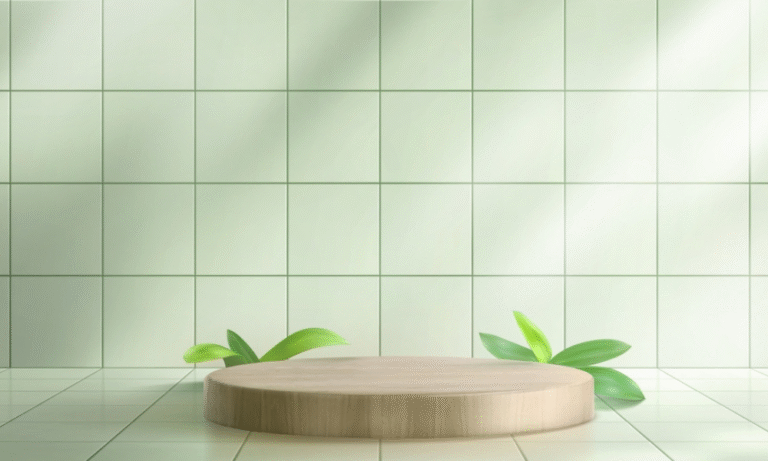Estimated reading time: 5 minutes
Choosing the right flooring can feel like a high-stakes decision. After all, the surface underfoot sets the tone for your space, whether it’s a bustling kitchen or a serene bedroom. Tile and hardwood are two heavyweights in the flooring world, offering style, durability, and functionality. But which material fits where? I’ll break it down room by room so you can pick the perfect flooring for every corner of your home.
What You’ll Learn in This Guide
How tile and hardwood compare in durability and maintenance.
Which flooring feels better underfoot for specific rooms.
The cost and longevity of tile vs. hardwood.
Recommendations for kitchens, bathrooms, living rooms, and more.
Let’s dive into this stylish showdown!
Tile vs. Hardwood: The Basics
Before diving into specific rooms, it’s essential to understand what makes these two options distinct.
Tile: A hard, cool surface made from materials like ceramic, porcelain, or natural stone. Known for its water resistance and vast design options, it’s a favorite in high-moisture areas.
Hardwood: Warm and elegant, hardwood brings natural charm with a variety of grains and stains. While beautiful, it requires a bit more TLC to keep it looking pristine.
Living Room: A Space for Warmth and Style

Why Choose Hardwood? It’s tough to beat the cozy, inviting feel of hardwood in a living room. Its natural tones create a timeless aesthetic that pairs well with rugs and furniture.
Why Choose Tile? For high-traffic areas or homes in warmer climates, tile offers unmatched durability and a cool surface that resists wear and tear.
My Take: Hardwood wins in living rooms for its comfort and ability to make the space feel like home. But if you’ve got pets with sharp claws or a toddler who loves to spill juice, tile might be the smarter pick.
Kitchen: The Heart of the Home
Tile’s Strengths: Kitchens are a splash zone, and tile handles water, spills, and dropped pots like a champ. Its easy-to-clean nature is a lifesaver after a cooking marathon.
Hardwood’s Appeal: It adds warmth and a seamless look, especially in open-concept homes. However, constant exposure to moisture can lead to warping or damage.
My Take: If your kitchen is a culinary battlefield, tile is your hero. But for less chaotic kitchens, hardwood can elevate the space with its luxurious charm.
Bathroom: A Moisture Magnet
Tile’s Durability: This one’s a no-brainer. Bathrooms are wet, and tile is practically waterproof. Choose textured tiles for added slip resistance.
Hardwood’s Challenges: Moisture is hardwood’s kryptonite. Even with sealing, it’s not ideal for high-humidity spaces like bathrooms.
My Take: Stick to tile for bathrooms. Unless, of course, you enjoy living dangerously (and paying for frequent repairs).
Bedroom: Comfort Meets Style

Hardwood’s Warmth: Bedrooms are your retreat, and hardwood’s natural beauty creates a relaxing atmosphere. Plus, it feels cozier underfoot than tile.
Tile’s Minimal Presence: Tile isn’t a common choice for bedrooms, but in hotter climates, its coolness might be appealing.
My Take: Hardwood takes the crown here. It’s hard to imagine waking up on a chilly tile floor unless you’re a fan of morning shock therapy.
Basement: A Challenge of Moisture and Temperature
Tile’s Resilience: Basements often battle humidity, making tile the safer option. It won’t warp or crack in damp conditions.
Hardwood’s Vulnerability: Even engineered hardwood struggles in damp spaces, making it a risky choice for most basements.
My Take: Tile wins this round hands down. Save the hardwood for spaces where it can truly shine.
Cost Comparison: What’s the Budget?
Tile: While the upfront cost of tile can vary based on material, it’s often comparable to hardwood. However, installation can be labor-intensive, adding to the expense.
Hardwood: Solid wood floors tend to be pricier but can offer a better return on investment for resale value.
Maintenance and Longevity
Tile: Easy to clean and practically indestructible, but grout lines can be a pain to maintain.
Hardwood: Requires regular sweeping and occasional refinishing to maintain its luster, but it ages gracefully with proper care.
Underfoot Feel
Tile: Cool and hard, which might be a blessing in hot climates but less desirable in colder ones.
Hardwood: Warm and firm, offering a comfortable walking surface.
My Take: This comes down to personal preference. If you want warm toes in the winter, hardwood is the way to go. If you live somewhere sunny and warm, tile’s cool surface can be refreshing.
Safety Considerations
Both materials can be slippery when wet, but tile tends to be slicker. Opt for textured tiles or add rugs for safety in areas prone to spills or moisture.
Which One Lasts Longer?
Tile: Can last for generations if well-maintained. Individual tiles are easy to replace if damaged.
Hardwood: Also long-lasting but may need refinishing every few years, depending on traffic.
Final Thoughts: Choosing What’s Right for You
Ultimately, the choice between tile and hardwood depends on your needs, preferences, and the specific room. Here’s a quick recap:
- Go for tile: In kitchens, bathrooms, and basements where water resistance is critical.
- Opt for hardwood: In living rooms, bedrooms, and spaces where comfort and warmth are key.



